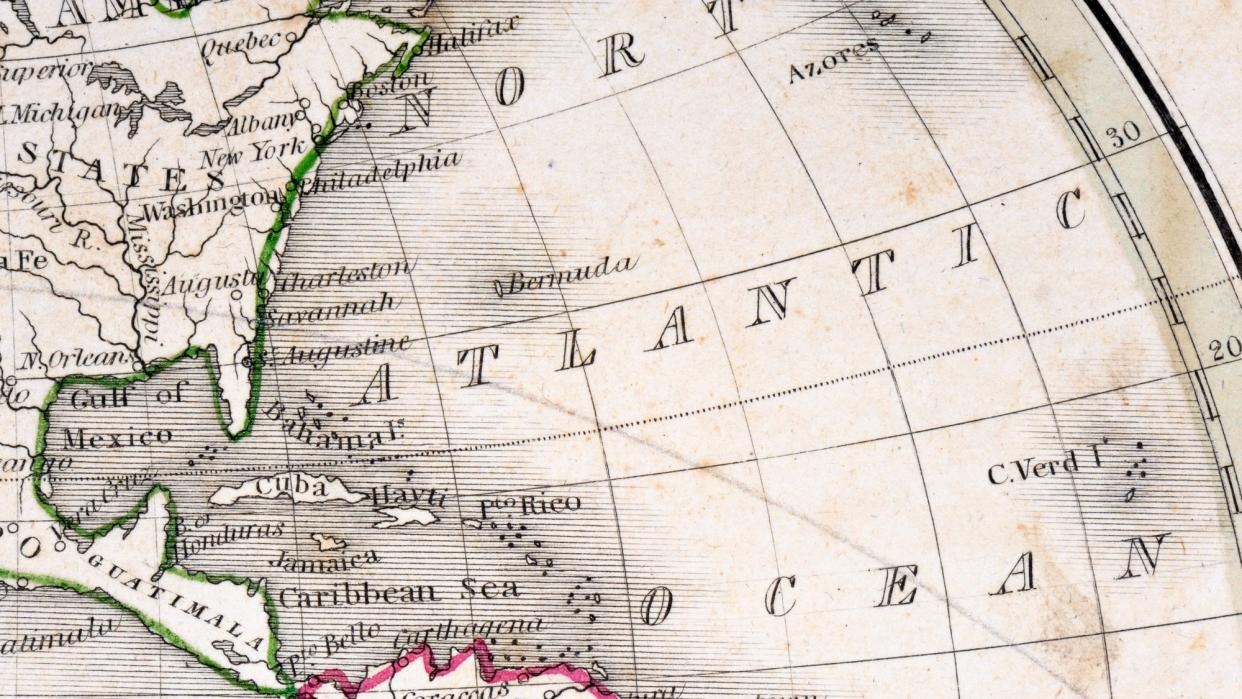The Atlantic Ocean may start shrinking

The Atlantic Ocean may begin to shrink, said a new study published in the journal Geology. Oceans are not necessarily a permanent fixture on Earth, as they are able to appear and close due to the work of plate tectonics. More specifically, subduction zones — where tectonic plates slip over and under each other — can push land to open or close oceans. Researchers found that an inactive subduction zone under the Strait of Gibraltar may begin migrating into the Atlantic Ocean, commencing the shrinking process. The zone also brings a higher risk of earthquakes and volcanic activity.
Background
Approximately 180 million years ago, the supercontinent Pangea broke up, forming the Atlantic Ocean between continents. Since then, the Atlantic Ocean has been growing gradually — over the course of millions of years, it has expanded at a rate of about 1.5 inches per year, Insider said. This growth is attributed to the Wilson Cycle, which "describes the birth, growth, and eventual closure of oceanic bodies over hundreds of millions of years," said Earth.com. As part of the cycle, a "continent breaks up and an ocean forms in the interior, the ocean grows as continents drift apart, and then they reach a turning point — subduction initiation — where the old, heavy plates at the edge of the ocean begin to slide underneath lighter continental plates. Then, the ocean shrinks until the continents at its edges collide," said Cosmos Magazine.
Since the Atlantic Ocean has been growing, it is only a matter of time before it begins to shrink, according to the Wilson Cycle. Much of this movement is caused by subduction zones which are "places where one tectonic plate sinks below another," a statement by the study authors said. Subduction zones are "characterized by intense geological activity, including earthquakes, volcanic eruptions and the formation of deep oceanic trenches," said Newsweek. This is similar to the Ring of Fire in the Pacific Ocean, which is a hotbed of volcanic activity. As the Atlantic has grown, the Pacific has shrunk. In order for the Atlantic to shrink, new subduction zones need to form, which is difficult and therefore does not happen often. "Plates are very strong and a subduction zone would require a plate to break and bend," Newsweek said. "However, subduction zones that already exist can migrate in a process known as subduction invasion."
The latest
The new study published in Geology found that there is an inactive subduction zone of interest beneath the Strait of Gibraltar. "A small subduction zone that is now below the Gibraltar Arc is dormant but will spread inside the Atlantic in the next 20 million years," which is relatively soon when it comes to geological timescales, João Duarte, a researcher at the University of Lisbon's Instituto Dom Luiz and study co-author, said to Newsweek. This zone will move to the Atlantic Ocean through subduction invasion. "Subduction invasion is inherently a three-dimensional process that requires advanced modeling tools and supercomputers that were not available a few years ago," said Duarte in the study author statement. "We can now simulate the formation of the Gibraltar Arc with great detail and also how it may evolve in the deep future."
The Atlantic already has two subduction zones: the Lesser Antilles in the Caribbean and the Scotia Arc near Antarctica. "These subduction zones invaded the Atlantic several million years ago," Duarte said. The two zones coupled with the one expected from the Strait of Gibraltar have the potential to create a ring of fire in the Atlantic Ocean. (The Pacific Ocean's Ring of Fire is where the majority of Earth's volcanoes and earthquakes take place.) "Studying Gibraltar is an invaluable opportunity because it allows observing the process in the early stages when it is just happening," Duarte added.
The reaction
The study findings indicate that the Atlantic Ocean may soon enter its declining phase, where the body of water will shrink and may disappear altogether in approximately 200 million years, Duarte said to Newsweek. Additionally, the presence of a reactivating subduction zone and the potential for a new ring of fire poses other threats. "The confirmation of ongoing activity in the Gibraltar subduction zone carries implications for seismic risk in the region, emphasizing the need for preparedness against potentially devastating earthquakes," said Earth.com.
Understanding subduction invasion also shapes our understanding of geological history. The Atlantic Ocean has been growing while the Pacific has been shrinking. However, just because the Atlantic may begin to shrink does not mean that the Pacific will grow. "Everything seems to suggest that the Pacific will close," Duarte said to IFLScience. "The solution is that another ocean has to open, and that may well be the Indian, or even an ocean that may split Africa and Eurasia."

